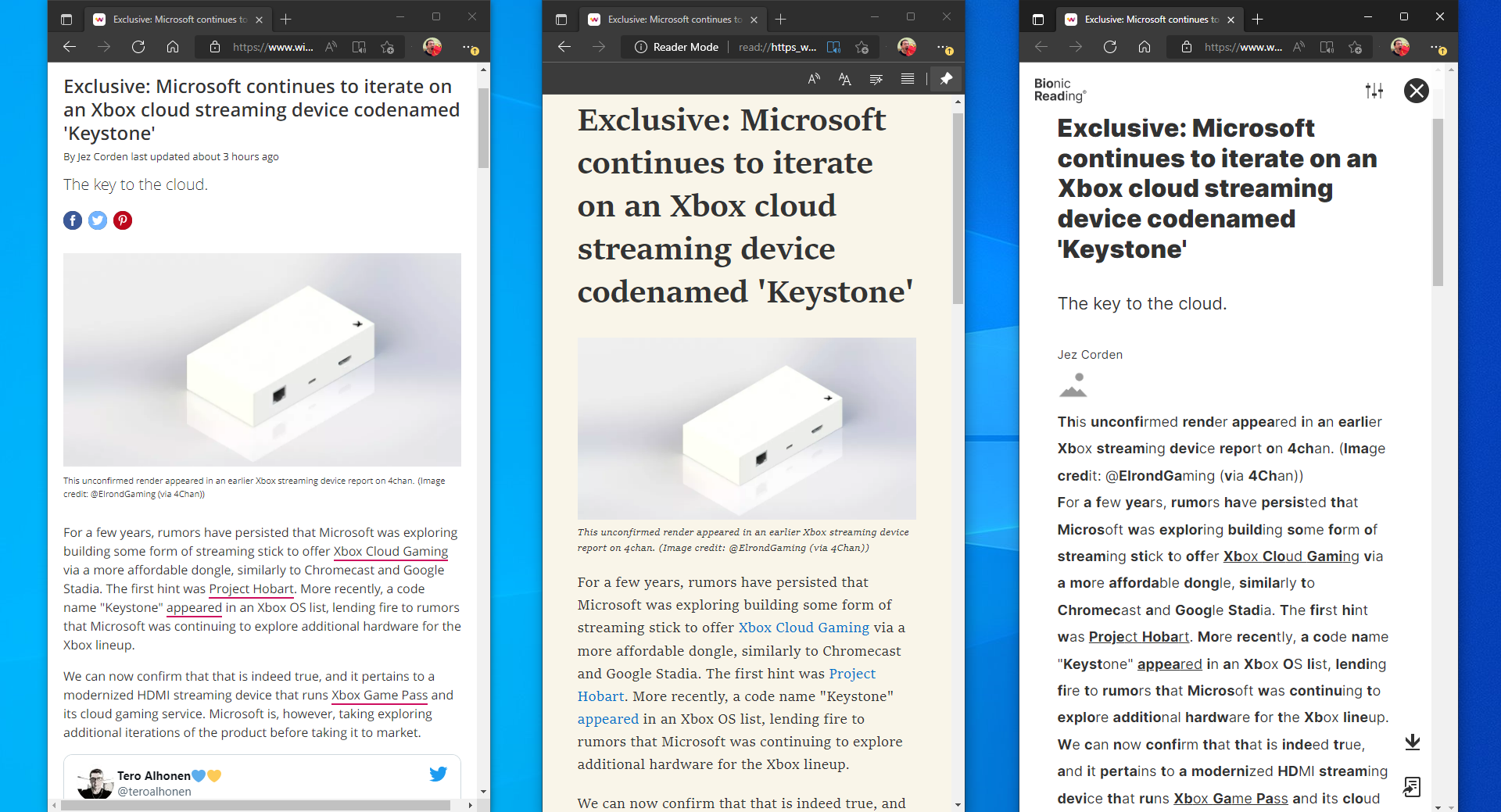Your brain reads faster than your eyes, or so says Bionic Reading. The company creates a tool that highlights certain parts of words to allow you to read more quickly. Bionic Reading went viral when it launched on a handful of iPhone and Mac apps. I got envious and pleaded with Microsoft to add the feature to Edge. While Bionic Reading isn’t built into Edge yet, it is now available as a Chrome extension.
Bionic Reading recently launched an extension for Chrome. It also works on Edge, since Microsoft’s browser is based on Chromium. In our brief testing, the extension works as you’d expect. It takes the text of a webpage and emphasizes specific parts of each word to drive your eyes along the text.

Bionic Reading’s extension has some limitations in its current state. It only shows text, meaning that any images on the original page are hidden. You can still read the text, but Bionic Reading doesn’t render any images or other content from a webpage. In contrast, Microsoft Edge’s Reading Mode shows images.
The extension also seems to have mixed results depending on which website you try to convert the text of.
While it has limits, Bionic Reading is customizable. You can select how much you want the tool to emphasize per word. You can also choose font size, line spacing, and page width. You can even send a converted website to a Kindle.
First impressions of the Bionic Reading extension are positive. I’ll have a full review of Bionic Reading in the near future, in which I’ll compare it to Microsoft Edge Reading Mode and other text enhancement tools.
The makers of Bionic Reading want it available across a wide range of apps, so there’s still a chance that Microsoft could add the feature to Edge. In the meantime, Bionic Reading’s free extension is available through the Chrome Web Store.




